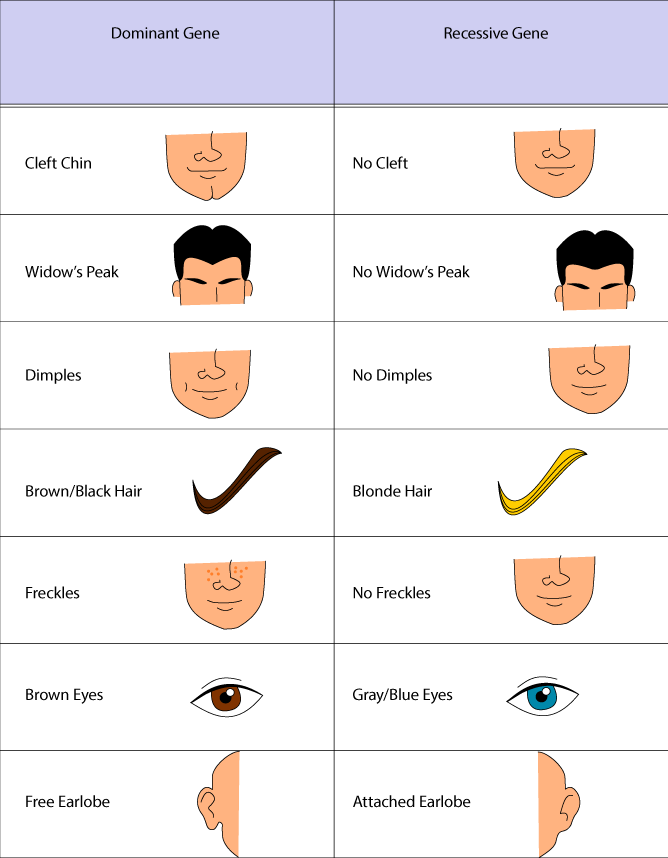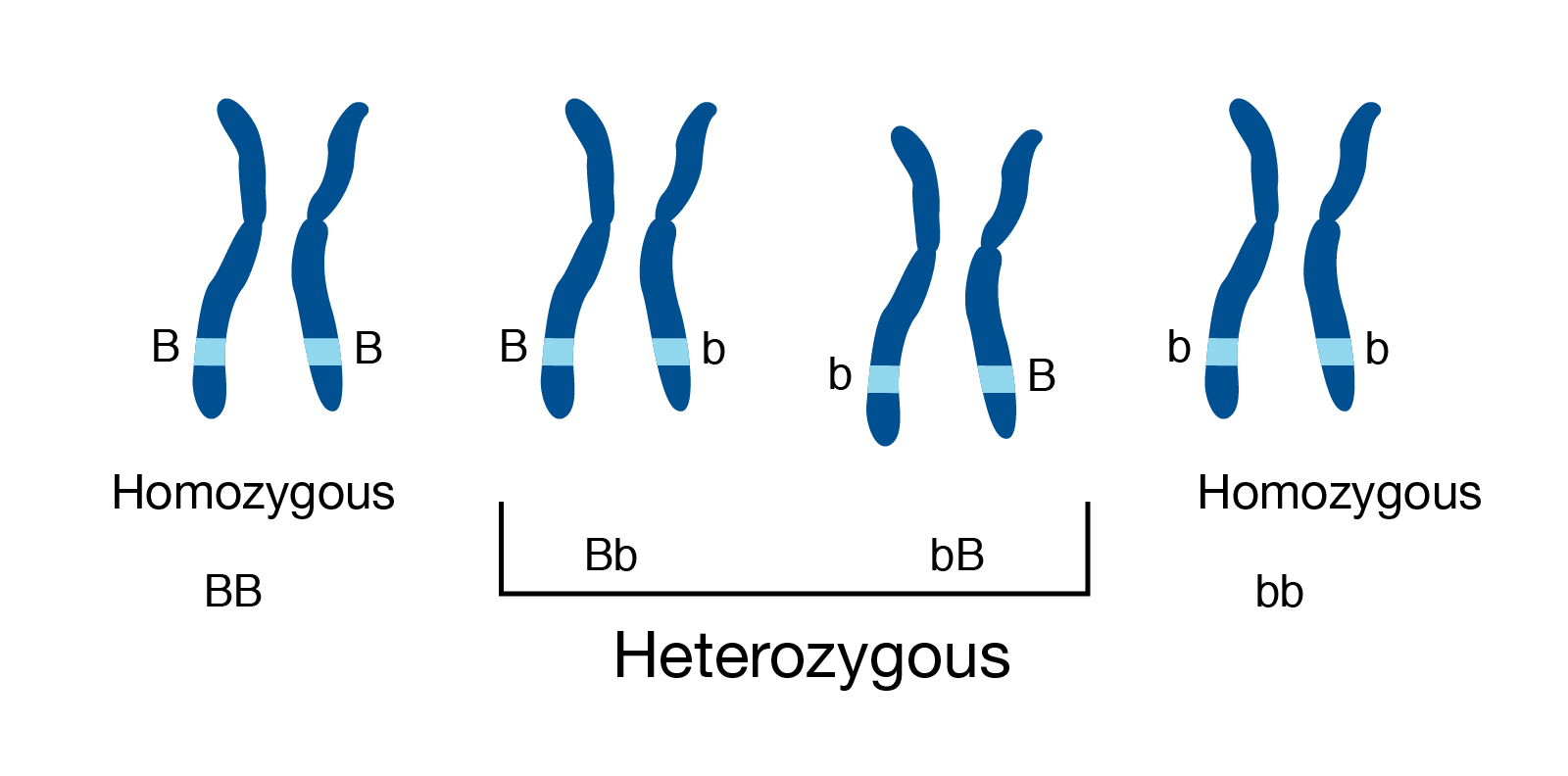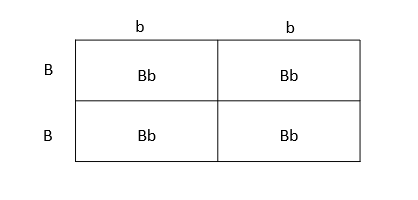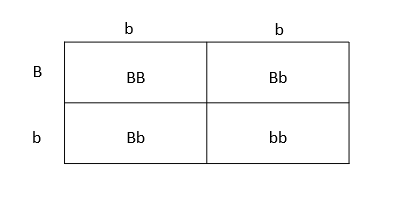Probability in Inheritance – Punnett Squares Study Guide
Introduction
Probability and statistics are closely related and have important applications in science. In the same way, probability and genetics are also very closely related! Incidences of genetically inherited traits are just instances of probability.
Punnett Square Definition
A square diagram is made up of a grid of four boxes, typically, that is used to compute and show all the frequencies and combinations of the various genotypes and phenotypes among a cross’s progeny.
Common Terminology
Alleles: A person’s characteristics are the consequence of how the genetic material is paired. This genetic material is known as alleles. It is the framework of these alleles that determines the traits of an individual, like hair color, eye color, height, etc. Certain alleles are dominant, and certain are regressive. A person with one or two dominant alleles exhibits the dominant trait. And a person who has two recessive alleles displays the recessive characteristic.
Genotype: The specific pairing of alleles that an individual inherits that code for a specific trait, is known as a genotype.
Phenotype: The actual physical trait or appearance is known as the phenotype – meaning regardless of the actual genotype, the phenotype is the resulting characteristic of that genotype.
Confusing, right? Let’s look at an example. What determines the hair color of an individual?
- There’s a dominant allele ‘B’ that represents black hair color, and there’s a recessive allele ‘b’ that represents brown hair color.
- Persons whose alleles are paired as BB or Bb both have black hair. The person has black hair even if the pairing of alleles is different!
- In this case, the particular pair of alleles is known as the person’s genotype (the collection of genes an individual has imbibed). In order for an individual to have brown hair, they’d need to have a bb genotype. Black hair would be the phenotype and Bb or BB would be the genotype.
- So if you think about it, there are two genotypes for the phenotype of black hair. However, only people who have bb pairing will have brown hair.

Common Terms in Genetics
Certain words that are often used in genetics studies are very helpful for understanding how Punnett squares work. One of them is the word “allele,” which refers to a gene variation. An allele is a gene variation that codes for a specific trait, such as the red or white flowers that a pea plant may produce.
A genetic makeup or genotype is said to be homozygous when it has two copies of the same allele. Also known as true-breeding specimens, these. For instance, the genetic loci encoding for flower colour are homozygous in plants with white flowers.
Heterozygous individuals are those who have two distinct alleles at that location. One allele for red and another for white may be found in many plants with red blooms. Phenotype refers to a trait of a person that is viewed from the outside.
Functions of Punnett Squares
- Punnett squares can precisely forecast the ratios of different apparent qualities as well as their underlying genetic makeup in large-scale tests like those carried out by Mendel.
- For instance, the Punnett square can predict that all the progeny will be tall and that they will all be heterozygous for both the allele for shortness and the gene for tallness when a true-breeding tall pea plant is cross-fertilized with pollen from a true-breeding short pea plant.
- Furthermore, if these heterozygous plants are let to self-fertilize, it can be predicted that around 75% of the second-generation plants would be tall and the other 25% will be short. One-third of the tall plants will continue to be genuine breeders, while the other two-thirds will be heterozygous.
Composition of Genotypes

Now let us talk about the composition of genotypes. A genotype like BB or bb has alleles identical. When a person has this type of genotype, he is known as homozygous. When a genotype is like Bb, the alleles will be different from each other. When an individual has this kind of pairing, this case will be heterogeneous.
Parents and Descendants
Each of the parents possesses a pair of alleles. The parents individually give one of these alleles to their progeny. This is how the descendant derives the pair of its alleles. When we know the parents’ genotype, we can expect the genotype and phenotype of the descendant. It has been observed that 50% of each parent’s alleles are carried forward to the descendant.
Now, let’s again talk about the case of hair color. Both the parents have black hair, have genotype Bb and are heterozygous; there’s a chance that each of the parents has a 50% chance of passing down the allele B (which is dominant). There’s also a 50 % chance of passing down allele b (recessive).
Below is a gene and allele diagram for better understanding:

Punnett squares
The enumeration above can be more concisely shown by employing a Punnett square. Representation like this is named after Reginald C. Punnett.
What is Punnett square?
A Punnett square comprises a tabular representation that registers all the possible genotypes of the descendant. The parents’ genotypes are usually marked outside the Punnett square. The input of each cell in the table is decided by observing the alleles in the column and row of that input.

Let’s put together Punnett square examples for all probable conditions of a single characteristic.
When both parents are homozygous:
All the descendants will possess a matching genotype when both mother and father are homozygous. Let’s study the cross between BB and bb. In the tabular presentation below, the parents are represented in bold.

Now all the descendants are heterogeneous, with the genotype of Bb.What’s a monohybrid cross Punnett square? This is a tabular representation of a genic combination between two persons who have homozygous genotypes (genotypes having recessive alleles or completely dominant alleles).
When one parent is homozygous:
When one parent is homozygous, the other parent is heterozygous. The Punnett square from one homozygous parent and one heterozygous parent is below.

When the parent is homozygous and has two dominant alleles, all the descendants will have the same dominant trait phenotype. To put it another way, there is a ten out of ten possibility that when a descendant has a pairing of that nature, this pairing will show the dominant phenotype. Now we can also study that there is a possibility that the homozygous parent has two recessive alleles. Now half of the descendants will show the recessive trait with genotype bb. The other half will show the dominant trait, with heterozygous genotype Bb.

When both parents are heterozygous:
When both the mother and the father are heterozygous, both parents will possess the same genotype consisting of one dominant allele and one recessive allele.Based on the above circumstances, the Punnett Square is represented below. Here we see three ways in which an offspring can exhibit a dominant trait, and there is one way for a recessive trait. This means a 25% chance that an offspring will have a recessive trait and a 75% chance that an offspring will have the dominant trait.

What is a dihybrid Punnett square?
In this case, both parents are heterozygous, and one allele for each characteristic shows absolute dominance. This means that both parents have recessive alleles but exhibit the dominant phenotype.
What is a trihybrid cross Punnett square?
A trihybrid cross is a type of Punnett square generated for 3 traits. This kind of Punnett square is a table of 64 boxes, created with the combinations of 6 mother’s and 6 father’s alleles.
Conclusion:
- Punnett square is useful in calculating the probabilities of offspring with certain genetic characteristics.
- The frame of a Genetic material known as Alleles determines the traits of an individual.
- When a person has Identical Alleles, he is known as homozygous, and when the alleles are different, he is heterogeneous.
FAQs:
1. How do Punnett squares predict the probability?
A Punnett square predicts the percentages of phenotypes in the descendant by studying across from recognized genotypes of both parents.
2. How do you find the probability of offspring using a Punnett square?
Find out the total number of boxes in the particular Punnett Square. This will provide the total figure of offspring predicted. Now you divide the (number of occurrences of the phenotype) by (the total number of offspring). You have to multiply the number from step 4 by 100, and you will obtain your percent.
3. How do you find the probability of an offspring?
You have to divide the number of boxes having an allele dominant by four. Now you multiply the result by 100. This result gives you the probability that an offspring will have the dominant trait. For example (2/4)*100 = 50, therefore there is a 50% probability of an offspring having brown hair.
4. What is probability and how does it relate to genetics?
Probability is a technique applied to predict the possibilities of indefinite results. It is significant for the domain of genetics. It is applied to tell the traits concealed in the genome by the dominant alleles.
5. What is the probability of a heterozygous offspring?
There is a 50% x 50% = 25% probability that both of the alleles of the offspring are dominant. There is a 50% x 50% = 25% probability that both alleles of the offspring’s are recessive. There is a 50% x 50% 50% x 50% = 25% 25% = 50% chance that the offspring is heterozygous.
6. How do you do a 4×4 Punnett square?
Making a 4×4 Punnett Square is quite challenging. However, it becomes easy when we use a dihybrid cross calculator.
We hope you enjoyed studying this lesson and learned something cool about Probability in Inheritance – Punnett Squares! Join our Discord community to get any questions you may have answered and to engage with other students just like you! Don’t forget to download our App to experience our fun, VR classrooms – we promise, it makes studying much more fun! 😎
Continue your learning journey by learning more about genetics:
1. Mendelian Genetics 2. Non Mendelian Genetics3. Population Genetics4. Nucleic Acids
]]>